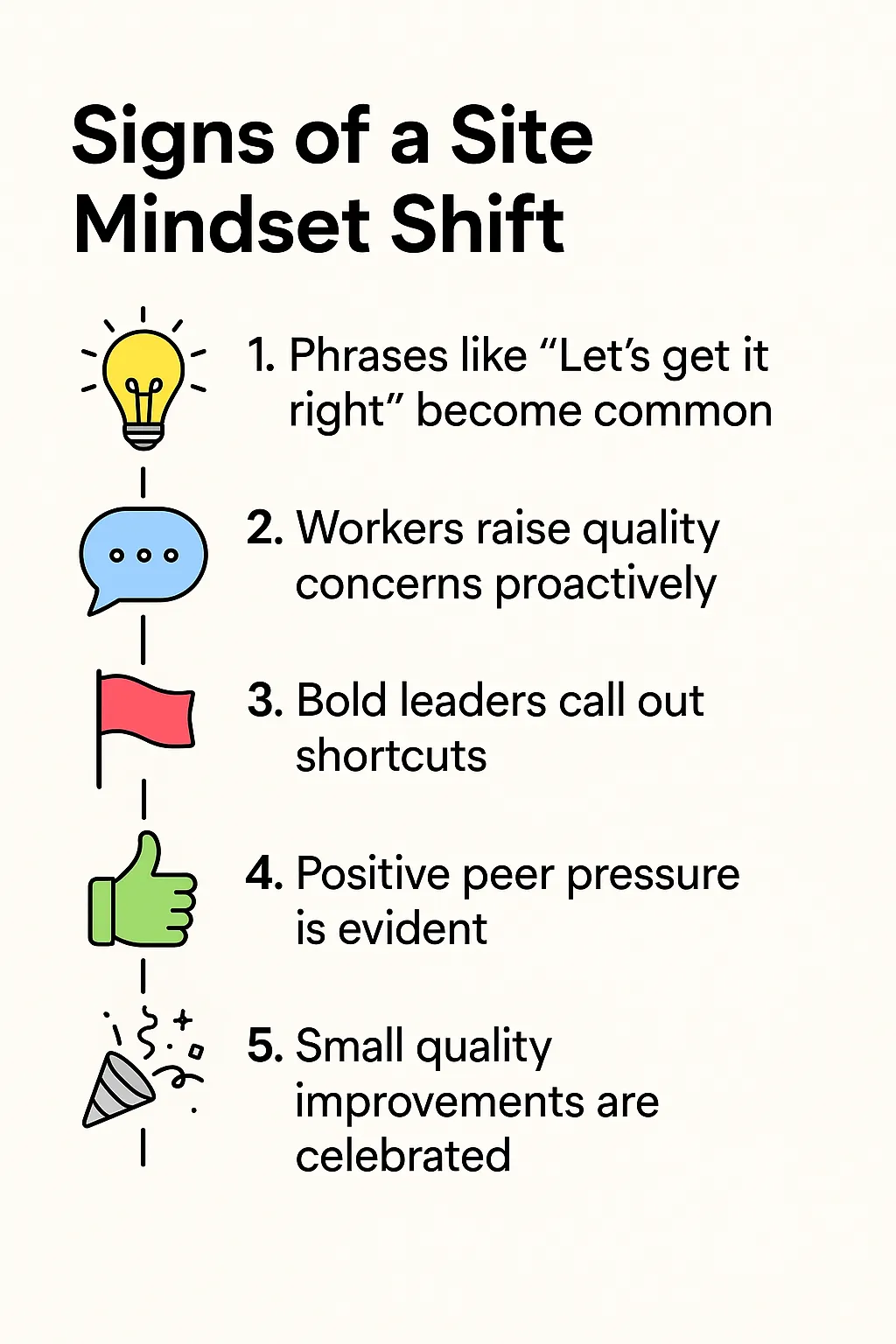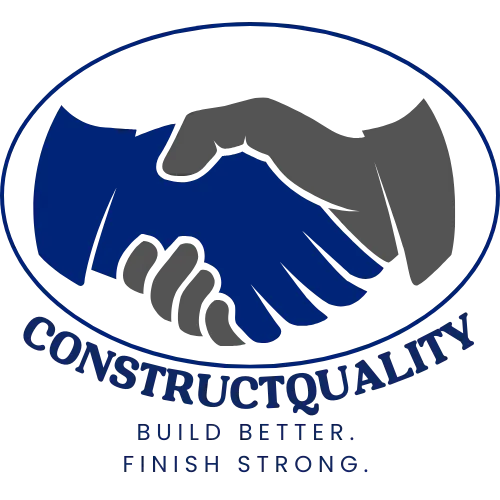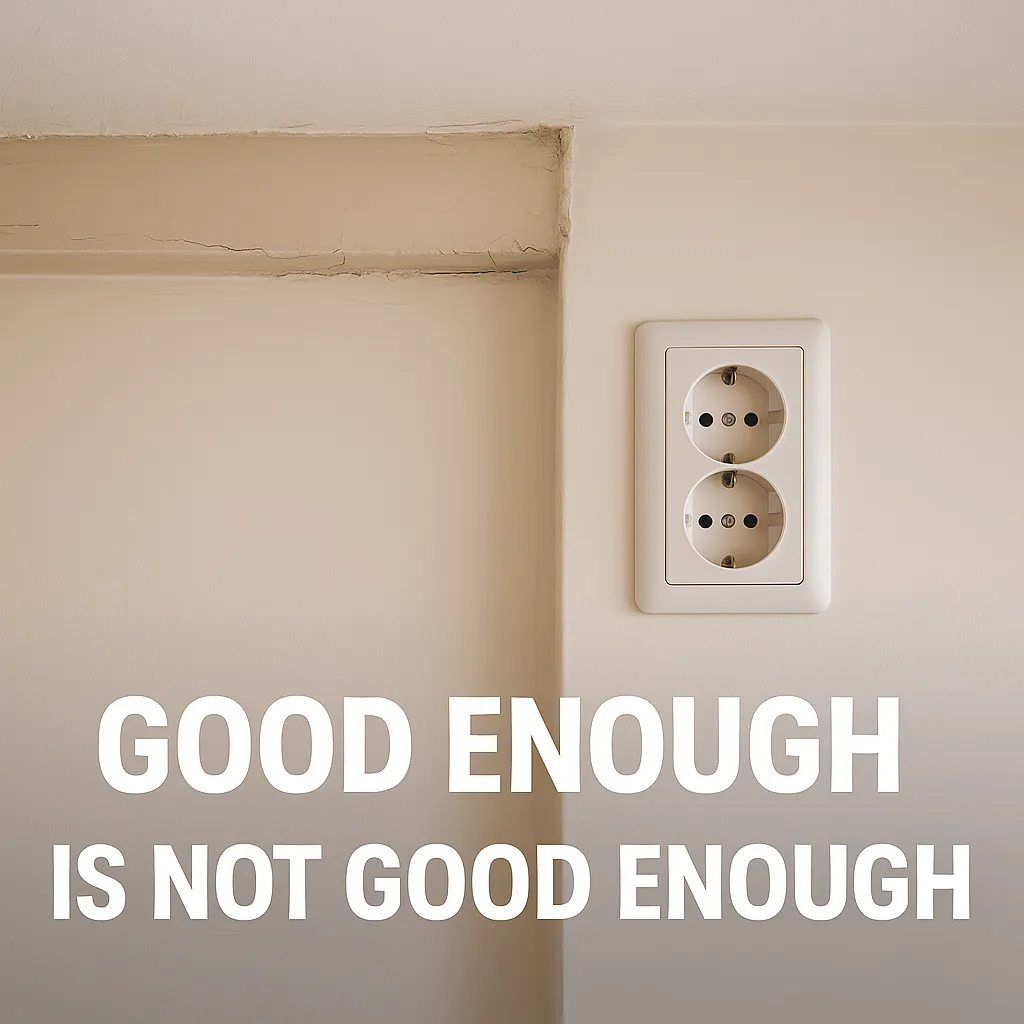From 'It’s Good Enough' to 'Let’s Get It Right': Changing the Mindset on Site
There’s a phrase you’ll hear on almost every construction site: “It’s good enough.” It often follows a rushed installation, a misaligned component, or a skipped checklist. It’s not shouted—but mumbled. Shrugged. Whispered under breath. It’s the quiet killer of quality, profit, and pride.
Changing this mindset is one of the toughest challenges in construction. Not because workers don’t care—but because speed, habit, and pressure often win over patience, process, and pride. In this post, we’ll explore why this mindset exists, how it shows up, and how leaders can slowly—but meaningfully—turn it around.
The ‘Shortcut Culture’—Where It Comes From
The culture of “good enough” doesn’t come from laziness. It comes from:
- Tight deadlines
- Thin margins
- Subcontractor stacking (everyone tripping over each other)
- A history of being told to just finish it
- No reward for doing it right—but lots of heat for taking too long
When workers are constantly told to "just get it done," they stop thinking long-term. They start working for the moment—not the outcome.
What This Mindset Costs You
A “good enough” culture leads to:
- Rework
- Frustrated clients
- Bitter handovers
- Warranty claims
- Damaged reputation
Example: A tiling subcontractor in South Africa on one of our projects laid tiles slightly off-angle in a hotel corridor. It wasn’t flagged at the time—everyone said, “It’s good enough.” Months later, when natural light exposed the wave pattern, the developer refused final payment until the floor was redone.
5 Signs Your Site Has a ‘Good Enough’ Problem
- Work is passed off without double-checking.
- Minor defects are ignored unless the client sees them.
- Foremen rarely use inspection checklists.
- Teams joke about shortcuts (“It’ll be hidden by paint anyway.”)
- You hear more about speed than quality in site briefings.
So How Do You Change It?
You don’t fix mindset with memos. You fix it by shifting site culture—one conversation, one habit, one example at a time.
Step 1: Change the Language
Replace phrases like:
- “That’ll do” ➜ with “Is it how we want to hand it over?”
- “They won’t notice” ➜ with “Would you sign off on this if it were your home?”
Example: A contractor in Belgium began ending toolbox talks with one question: “What would your dad say about this detail?” It turned into a catchphrase that changed attitudes on the site.
Step 2: Celebrate the Right Behaviours
Too often, we only react to mistakes. Instead, start highlighting:
- A perfect joint alignment
- A team who caught a mistake early
- Someone who cleaned up without being told
Recognition—even informal—shapes culture faster than punishment.
Step 3: Create Peer Pressure for Pride
When one team raises their standard, others follow. Highlight one trade’s great work during daily huddles. Use photos. Make it visible. Pride is contagious.
Tool: Use a simple photo wall—“Best of the Week” workmanship photos on WhatsApp or the canteen board.
Step 4: Involve Workers in the Solution
Ask your teams:
- “What slows you down?”
- “What quality issues frustrate you most?”
- “What should we stop doing that wastes time but adds no value?”
Involving them makes them care. People commit to what they help create.
Final Thought: Culture Change is a Slow Build
You don’t change site culture with a policy. You change it with leadership, example, and repetition. Over time, workers stop shrugging “It’s good enough” and start asking “Is it right?”
That’s when the magic happens.

Have you experienced a site culture transformation—or trying to spark one now? Share your story with us at [email protected]. We’ll feature the best ones in our upcoming blog series.







